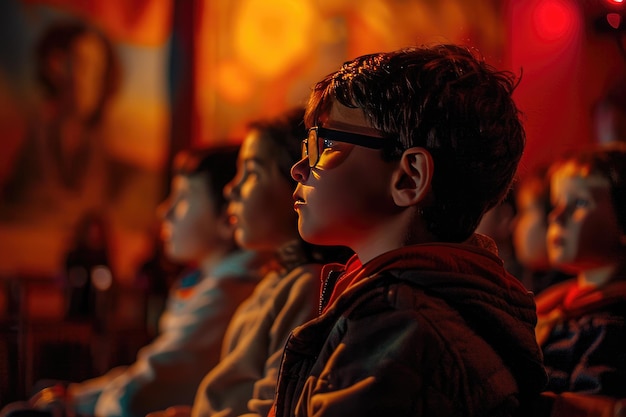Quick Read
Banned Bollywood Films: A Deep Dive into the Controversial History of Indian Cinema
The Bollywood film industry, renowned for its vibrant colors, melodious music, and emotional storytelling, has not always had a smooth sail in India’s cultural waters. A significant yet often overlooked aspect of Bollywood’s history is the controversy surrounding banned films. This exploration delves into the intriguing, sometimes contentious, narrative of banned Bollywood productions and their impact on Indian society and politics.
Controversial Content and Censorship
Bollywood films
have long been a reflection of the societal fabric and cultural nuances in India. However, some productions have faced backlash due to their controversial themes and explicit content. Censorship, a crucial aspect of Bollywood film production, has been instrumental in shaping the final product. The Central Board of Film Certification (CBFC), formerly known as the Censor Board of India, has been entrusted with the responsibility of regulating and certifying films since 195Yet, the process has often sparked debates on artistic freedom, morality, and ethics.
Political Interference and Ban Orders
Bollywood films have not only faced the scrutiny of the Censor Board
, but also political interference and ban orders. In several instances, governments have imposed bans on films due to their perceived politically-sensitive content or potential to incite unrest. For example, the 1975 film “Aandhi,” which was allegedly inspired by the life of then-Prime Minister Indira Gandhi, faced a government ban due to its controversial portrayal.
The Impact on the Film Industry
Banned films
, despite their controversial nature, have contributed significantly to Bollywood’s rich history. The ban on a film often creates widespread publicity and curiosity among audiences, leading to increased ticket sales once the restrictions are lifted. Some banned films have even paved the way for socio-political change, pushing boundaries and sparking important discussions in Indian society.
Examples of Banned Bollywood Films
- “Fire” (1996): This groundbreaking film, directed by Deepa Mehta, explored the taboo topic of lesbian relationships in India and faced protests and threats from right-wing groups, eventually leading to a ban.
- “Bandit Queen” (1994): Based on the life of Indian bandit Phoolan Devi, this film was internationally acclaimed but faced an Indian ban due to its graphic portrayal of violence and sexual content.
- “India Unbound” (1983): This documentary, which critiqued the Indian government and its policies, was banned in India but screened at prestigious international film festivals.
Conclusion: Censorship and Freedom of Expression
In conclusion, the controversy surrounding banned Bollywood films underscores the ongoing debate on censorship and freedom of expression in India. As society evolves and taboo topics become more openly discussed, it is essential to re-evaluate the role of censorship in Bollywood film production and its impact on India’s cultural landscape.

Introduction
Bollywood cinema, originating from Mumbai (formerly Bombay), India, is known for its vibrant storytelling, melodious music, and colorful productions. With over a thousand films produced annually, it is the largest film industry in the world in terms of output. Bollywood‘s global popularity has grown exponentially over the past few decades, transcending geographical boundaries and capturing the hearts of audiences worldwide.
Brief Overview
The roots of Bollywood can be traced back to the late 1800s when the Lumière brothers introduced the first cinematograph in India. However, it was not until the late 1940s and 1950s that Bollywood began to flourish with films like “Awaara” (1951) by Raj Kapoor and “Mother India” (1957) by Mehboob Khan. These films established the trend of long narratives, melodramatic plots, and elaborate musical sequences that continue to be a hallmark of Bollywood cinema.
Importance of Understanding the Context
Banned films within Bollywood’s rich history are an intriguing aspect that demands our attention. Understanding the context of these films is crucial for several reasons. First, it provides insights into the socio-political climate and cultural norms of India during different eras. Second, it sheds light on the evolving narrative styles and cinematic techniques in Bollywood. Last but not least, examining banned films offers a unique perspective on the complex relationship between censorship, artistic expression, and societal values in India’s film industry.
Banned Films: A Reflection of Socio-Political Climate
Throughout its history, Bollywood has grappled with various socio-political issues, and some films have been banned due to their controversial content. For instance, “Ishq” (1960), directed by Sohrab Modi, was banned for its depiction of interfaith love during a time when religious tensions were high. Similarly, “Fire” (1996) by Deepa Mehta sparked controversy and protests due to its exploration of lesbian relationships in a conservative society.
Banned Films: A Reflection of Cultural Norms
Banned films can also reflect the changing cultural norms in Indian society. For instance, “Bandit Queen” (1994) by Shekhar Kapur was banned initially due to its explicit depiction of violence and sexual content. However, it eventually gained critical acclaim and recognition as a groundbreaking work that challenged societal taboos.
Banned Films: A Reflection of Censorship and Artistic Expression
The story of banned films in Bollywood also underscores the ongoing debate about censorship and artistic expression. Films like “Umrao Jaan” (1981) and “Bandit Queen” have been banned at various points, sparking debates about the role of censorship in protecting societal values versus allowing artistic freedom. These instances serve as reminders that Bollywood’s vibrant and complex history goes beyond just entertainment, providing a mirror to India’s socio-political landscape and cultural evolution.

Historical Context of Film Censorship in India
Film censorship in India, a vibrant and diverse cinematic landscape, has its roots deeply embedded in the political, social, and moral fabric of the country’s history. The Indian Cinematograph Act, 1952, enacted during the post-colonial era, established the legal framework for film censorship in India. It is under this act that the Central Board of Film Certification (CBFC), formerly known as the Central Board of Film Censors, operates.
The Indian Cinematograph Act, 1952 and the role of the Central Board of Film Certification (CBFC)
The Indian Cinematograph Act, 1952, which came into force on May 1, 1953, outlined the guidelines for certification and regulation of films. The Act mandated that every film intended for public exhibition in India must be certified by the CBFThis certification process was designed to ensure compliance with the moral, social, and decency codes established under the Act.
Political, social, and moral reasons for film censorship in India
Political: The British colonial influence significantly shaped the morality and decency codes incorporated in the Indian Cinematograph Act, 195The Indian National Congress, which spearheaded India’s struggle for independence from British rule, took a liberal stance on censorship issues. However, the post-Independence government, under various pressures, adopted stricter film censorship policies to maintain social order and prevent any content that could incite religious or communal tensions.
British colonial influence on morality and decency codes
During the British colonial era, censorship was primarily enforced to uphold the moral and social values of the European population in India. This led to strict regulations on portrayals of violence, sex, and religion. These codes continued to influence Indian film censorship even after the country’s independence in 1947.
Post-Independence government’s role in shaping film content
The post-independence Indian government, under various political pressures, adopted a more stringent approach towards film censorship. This was done to maintain social order and prevent any content that could incite religious or communal tensions, given the sensitive sociopolitical climate of the time.
Impact of religious and communal tensions on censored films
Religious and communal tensions: Religious and communal issues have played a significant role in shaping film censorship in India. Films that depict or even subtly hint at religious or communal tensions can face severe criticism and censorship, often leading to protests and controversy.

I Notable Banned Bollywood Films
“Bandit Queen” (1994) by Shekhar Kapur
Synopsis and critical reception:
“Bandit Queen” is a groundbreaking Indian film directed by Shekhar Kapur, based on the life of Phoolan Devi, a former bandit queen and social activist from UP, India. The film was critically acclaimed both in India and internationally for its raw portrayal of sexual violence, casteism, and communal tension.
Controversies surrounding its portrayal:
Despite the critical acclaim, “Bandit Queen” sparked numerous controversies due to its graphic depiction of sexual violence. The film was banned in several states in India and faced protests from various religious and political groups due to the portrayal of sensitive issues like casteism, communal tension, and the role of law enforcement.
Impact on Indian cinema and the debate:
The ban of “Bandit Queen” led to a larger debate in India about artistic freedom versus morality. The film paved the way for more open discussions on social issues and the representation of marginalized communities in cinema.
“Fire” (1996) by Deepa Mehta
Synopsis and critical reception:
“Fire” is a drama film directed by Deepa Mehta, which portrays the story of two sisters-in-law who fall in love with each other. The film was praised for its bold exploration of lesbian relationships within Indian society, and it received critical acclaim both in India and internationally.
Controversies surrounding its portrayal:
The release of “Fire” was met with protests and controversy due to the sensitive theme of lesbian relationships. Hindu right-wing groups accused the film of promoting western values and obscenity, resulting in widespread protests and the eventual banning of the film in various states.
Impact on Deepa Mehta’s career and the larger debate:
“Fire” had a significant impact on Deepa Mehta’s career, as she faced death threats and was forced to leave India due to the controversy surrounding the film. The debate on sexuality, morality, and artistic expression in India continued to escalate, with many calling for greater freedom of expression while others criticized the film for promoting immoral behavior.
“Bandit Queen 2” (1998) by Ram Benegal
Synopsis and critical reception:
“Bandit Queen 2,” also known as “The Sword of Tipu Sultan,” is a historical film directed by Ram Benegal. The film faced controversy for its graphic depiction of communal violence, sexuality, and explicit content.
Controversies surrounding its portrayal:
The film was banned due to the controversy over its explicit content and depiction of sexual violence and communal tensions. The ban led to a larger debate on artistic freedom and censorship in India, with many arguing for the importance of creative expression while others calling for stricter regulation.
Impact on Ram Benegal’s career and the debate:
The ban of “Bandit Queen 2” had a significant impact on Ram Benegal’s career, as he faced criticism and backlash for the controversial content of the film. The debate on artistic freedom and censorship in India continued to evolve, with many arguing for greater artistic expression while others called for stricter regulation.
“Indiana Jones and the Temple of Doom” (1984) by Steven Spielberg
Synopsis and critical reception:
“Indiana Jones and the Temple of Doom” is a classic adventure film directed by Steven Spielberg, set in India. The film received mixed reviews, with some critics praising its action sequences and others finding the portrayal of Indian culture and stereotypes offensive.
Controversies surrounding its portrayal:
The film sparked controversy for its depiction of Indian culture and stereotypes, with some arguing that it perpetuated negative images of India. Protests were held in several cities, leading to the film being banned in some areas.
Impact on Bollywood-Hollywood collaborations and cultural representation:
The controversy surrounding “Indiana Jones and the Temple of Doom” had a significant impact on Bollywood-Hollywood collaborations and cultural representation. Many Indians felt that their culture was being misrepresented in Hollywood films, leading to a growing demand for greater representation and control over the portrayal of Indian culture in media.
The Role of Political Pressure on Film Censorship in India
Film censorship in India, the largest film producing country in the world, has been a subject of intense debate due to its significant impact on artistic freedom and public discourse. The role of political pressure in shaping film censorship policies is a contentious issue, particularly evident during periods of national emergency and in contemporary times.
Censorship and political propaganda during the Emergency (1975-1977)
During India’s 21-month long state of emergency from 1975 to 1977, political propaganda reached unprecedented levels. The Indian government, under the leadership of Prime Minister Indira Gandhi, suspended civil liberties and imposed strict censorship on various forms of media, including films. The Cinematograph Act, 1952 was amended to allow for a more stringent and opaque censorship process. Films were banned or heavily edited if they were deemed to challenge the political establishment, instigate unrest, or portray controversial topics.
Political pressures on controversial films and their creators in contemporary India
In contemporary India, political pressure continues to shape film censorship, often resulting in heated debates surrounding artistic freedom and the role of cinema in social change.
Examples: “Amar Akbar Anthony” (1976), “PK” (2014) and “Udta Punjab” (2016)
One notable example is the film “Amar Akbar Anthony,” released during the Emergency in 1976, which faced significant censorship issues due to its portrayal of a Hindu-Muslim love story at a time when communal tensions were high. The film was eventually released with numerous cuts and modifications.
More recently, films like “PK” (2014) and “Udta Punjab” (2016) have faced political pressure for addressing controversial topics such as religion and drug addiction, respectively. “PK,” directed by Rajkumar Hirani, sparked controversy due to its portrayal of Gods in an unconventional light and was initially banned before being released with several cuts. “Udta Punjab,” a film about drug addiction in the Indian state of Punjab, faced delays and cuts due to objections from the state government, which argued that the film would negatively impact the image of Punjab.
Impact on artistic freedom, public discourse, and the role of film in social change
These cases highlight the ongoing role of political pressure in shaping film censorship policies in India and their impact on artistic freedom, public discourse, and the ability of cinema to drive social change. The balance between upholding cultural sensitivities and protecting artistic expression remains a complex issue in India’s film industry.

Conclusion
The debate on censorship in Indian cinema continues to be a contentious issue, striking a delicate balance between artistic freedom,
Balancing Artistic Freedom and Morality
Artistic freedom, a fundamental aspect of any creative industry, plays an essential role in Indian cinema. Filmmakers strive to push boundaries and express themselves through their work. However, the portrayal of explicit content, such as sex, violence, or controversial themes, often sparks controversy. The question then arises: how much artistic freedom should be allowed while maintaining
Cultural Representation and Inclusivity
Another critical consideration in the ongoing debate on censorship is cultural representation and inclusivity. The depiction of marginalized communities, such as those based on religion, caste, gender, or sexual orientation, has been a subject of much debate and controversy. While some argue that it is essential to shed light on these issues through cinema, others believe that such content should be censored to prevent potential harm or offense. Balancing the need for cultural representation with societal morals and values can prove challenging.
Looking Forward: The Evolving Role of Film Censorship in India’s Democratic Society
As India continues to evolve as a democratic society, the role of film censorship must adapt accordingly. The FCB must find ways to strike a balance between artistic freedom, morality, and cultural representation while respecting the diverse voices within Indian society. This can involve reevaluating outdated guidelines, embracing technology to adapt to changing societal norms, and fostering a more inclusive dialogue between filmmakers and the regulatory body.
Impact on Global Cinema Culture
Moreover, the evolving role of film censorship in India will have a significant impact on global cinema culture. As India is the world’s largest film industry by output, the decisions made by its censor board can set precedents for other countries and influence global discourse on artistic expression and societal values. It is crucial that India’s film censorship practices remain transparent, fair, and representative of the diverse voices within its society.




